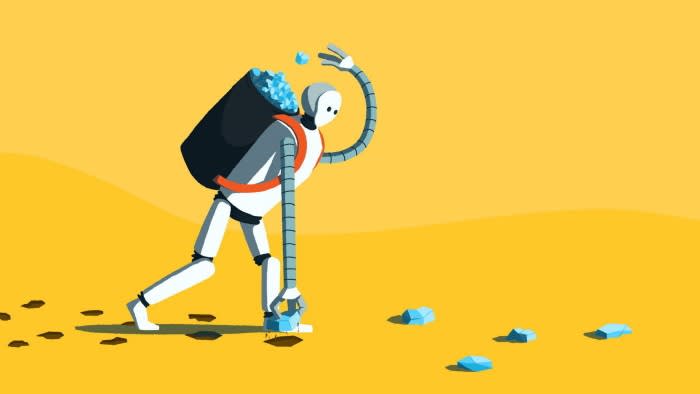Stay informed with free updates
Simply sign up to the Artificial intelligence myFT Digest — delivered directly to your inbox.
The writer is a science commentator
As Madonna once warbled, we are living in a material world. Our species has named historic periods after bronze, stone and iron. Modern society runs on innovative materials, such as lithium-ion batteries and solar cells.
So when Google DeepMind researchers claimed in November that its artificial intelligence tool had discovered more than 2mn new crystalline materials, the breakthrough made global headlines. The company presented the results as “an order-of-magnitude expansion in stable materials known to humanity”.
Separately, other researchers based in Berkeley simultaneously revealed that their automated laboratory had created 41 novel compounds, cross-referenced with Google DeepMind’s database, in under three weeks. Only the dullest mind could fail to imagine a giddy future: lines of robotic arms fabricating shiny new AI-designed materials to solve grand challenges like clean energy.
Since the two papers were published in Nature, however, the sparkle has dimmed somewhat. Earlier this month, materials scientists suggested Google DeepMind had overstated its achievement. In March, in a separate critique, chemists cast doubt on whether the 41 compounds claimed by the Berkeley team were novel at all. Both Google DeepMind and the Berkeley team told the FT that they stood by their respective papers.
The controversy comes just as the company’s co-founder, Sir Demis Hassabis, warned of hype and “grifting” in artificial intelligence. The clash shows that, while AI could be transformational, companies and institutions are struggling to tread the delicate boundary between optimism and overselling.
Coming up with new materials is usually a costly time-consuming business of trial and error. DeepMind’s AI approach, called Graph Networks for Materials Exploration, or Gnome, is a computational shortcut for one subset of compounds, namely inorganic crystals. It uses existing catalogues of known structures to generate new candidate crystals and applies AI to iterate towards structurally stable compounds.
Of the 2.2mn novel materials uncovered, the company deemed 380,000 stable enough to include in a database. But Anthony Cheetham and Ram Seshadri, from the University of California, Santa Barbara, wrote this month in the journal Chemistry of Materials, that the work showed “scant evidence for compounds that fulfil the trifecta of novelty, credibility and utility”. Cheetham tells me that “AI has a great future in materials science, but . . . [that] some of the accomplishments to date have been overhyped”.
A spokesperson for Google DeepMind said the paper only made claims for novelty and stability, rather than any specific properties, and that the critique seemed to be grounded in differing terminologies. Further research, he added, would shed light on the compounds’ properties.
The other AI-linked paper drawing criticism in materials science focuses on work done by researchers based at the University of California, Berkeley, and the Lawrence Berkeley National Laboratory. They have developed an automated lab that uses AI-guided robots to mix and characterise new compounds. Partly drawing on the Google DeepMind database, the Berkeley team announced its “A-lab” had made 41 novel compounds.
But Robert Palgrave, a chemist at University College London, and fellow Princeton University sceptics argued last month that the Berkeley claim was unwarranted, on two counts: the AI proposed materials that were already known and was later unable to spot that they lacked novelty. Gerbrand Ceder, who leads the Berkeley team, says: “We stand by the results in our paper that the A-lab succeeded in autonomously developing and demonstrating synthesis recipes for compounds for which it had no prior information, which is a remarkable achievement.”
Palgrave concedes that novelty is a subjective term: chips with added salt are still chips, he says, but caramel with added salt is seen by many as different. Novelty in materials, he adds, is generally a matter of consensus by scientists.
In other words, this is a culture clash writ large. There is also an inevitable mismatch in quality: early AI footsteps into materials science might be impressive by AI standards, but they are still nowhere near the level of human expertise in the field.
We don’t know how long that mismatch will last: researchers dream of conjuring up a high-temperature superconductor using a well-framed user prompt. If and when that day comes, we will still be living in a material world — but one not entirely of our own making.

